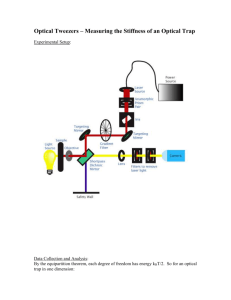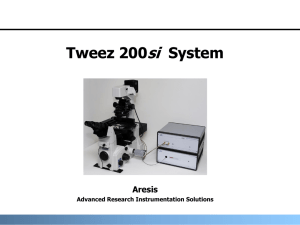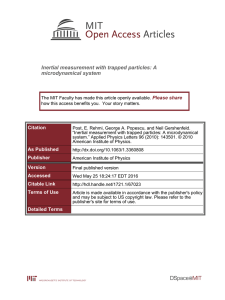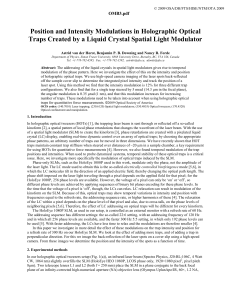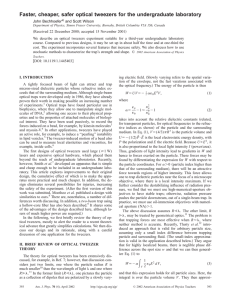Nanometre-sized metal structures sup- the basis for numerous technological
advertisement
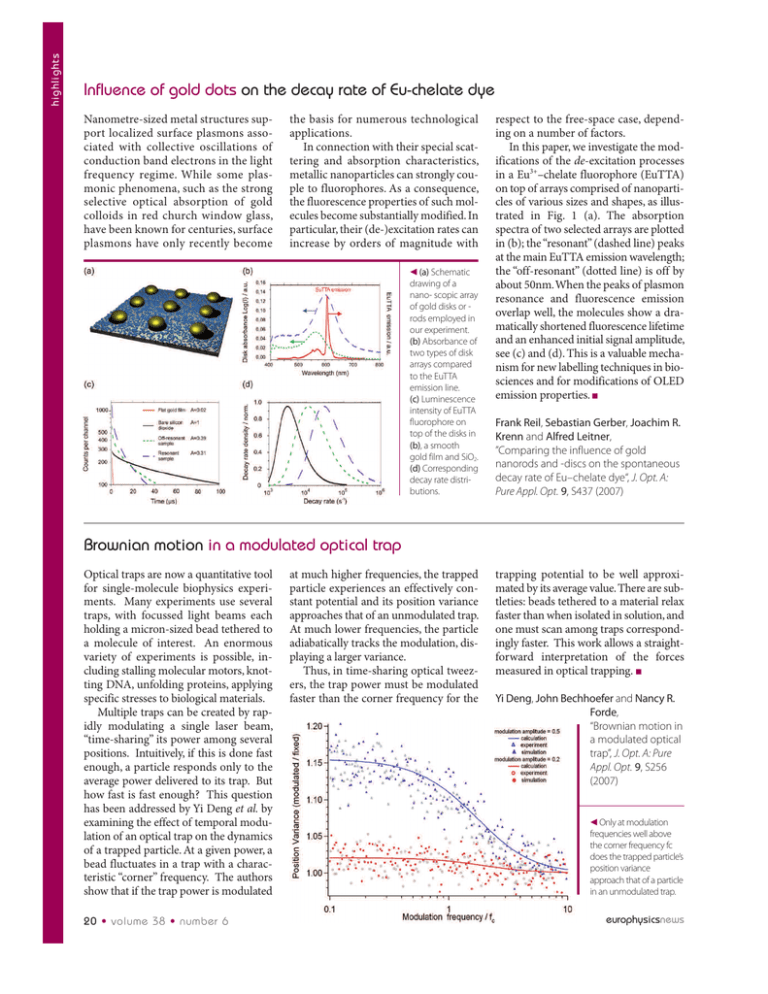
highlights Influence of gold dots on the decay rate of Eu-chelate dye Nanometre-sized metal structures support localized surface plasmons associated with collective oscillations of conduction band electrons in the light frequency regime. While some plasmonic phenomena, such as the strong selective optical absorption of gold colloids in red church window glass, have been known for centuries, surface plasmons have only recently become the basis for numerous technological applications. In connection with their special scattering and absorption characteristics, metallic nanoparticles can strongly couple to fluorophores. As a consequence, the fluorescence properties of such molecules become substantially modified. In particular, their (de-)excitation rates can increase by orders of magnitude with ! (a) Schematic drawing of a nano- scopic array of gold disks or rods employed in our experiment. (b) Absorbance of two types of disk arrays compared to the EuTTA emission line. (c) Luminescence intensity of EuTTA fluorophore on top of the disks in (b), a smooth gold film and SiO2. (d) Corresponding decay rate distributions. respect to the free-space case, depending on a number of factors. In this paper, we investigate the modifications of the de-excitation processes in a Eu3+–chelate fluorophore (EuTTA) on top of arrays comprised of nanoparticles of various sizes and shapes, as illustrated in Fig. 1 (a). The absorption spectra of two selected arrays are plotted in (b); the “resonant” (dashed line) peaks at the main EuTTA emission wavelength; the “off-resonant” (dotted line) is off by about 50nm.When the peaks of plasmon resonance and fluorescence emission overlap well, the molecules show a dramatically shortened fluorescence lifetime and an enhanced initial signal amplitude, see (c) and (d). This is a valuable mechanism for new labelling techniques in biosciences and for modifications of OLED emission properties. ■ Frank Reil, Sebastian Gerber, Joachim R. Krenn and Alfred Leitner, ”Comparing the influence of gold nanorods and -discs on the spontaneous decay rate of Eu–chelate dye“, J. Opt. A: Pure Appl. Opt. 9, S437 (2007) Brownian motion in a modulated optical trap Optical traps are now a quantitative tool for single-molecule biophysics experiments. Many experiments use several traps, with focussed light beams each holding a micron-sized bead tethered to a molecule of interest. An enormous variety of experiments is possible, including stalling molecular motors, knotting DNA, unfolding proteins, applying specific stresses to biological materials. Multiple traps can be created by rapidly modulating a single laser beam, “time-sharing” its power among several positions. Intuitively, if this is done fast enough, a particle responds only to the average power delivered to its trap. But how fast is fast enough? This question has been addressed by Yi Deng et al. by examining the effect of temporal modulation of an optical trap on the dynamics of a trapped particle. At a given power, a bead fluctuates in a trap with a characteristic “corner” frequency. The authors show that if the trap power is modulated 20 • volume 38 • number 6 at much higher frequencies, the trapped particle experiences an effectively constant potential and its position variance approaches that of an unmodulated trap. At much lower frequencies, the particle adiabatically tracks the modulation, displaying a larger variance. Thus, in time-sharing optical tweezers, the trap power must be modulated faster than the corner frequency for the trapping potential to be well approximated by its average value. There are subtleties: beads tethered to a material relax faster than when isolated in solution, and one must scan among traps correspondingly faster. This work allows a straightforward interpretation of the forces measured in optical trapping. ■ Yi Deng, John Bechhoefer and Nancy R. Forde, “Brownian motion in a modulated optical trap”, J. Opt. A: Pure Appl. Opt. 9, S256 (2007) ! Only at modulation frequencies well above the corner frequency fc does the trapped particle’s position variance approach that of a particle in an unmodulated trap. europhysicsnews

